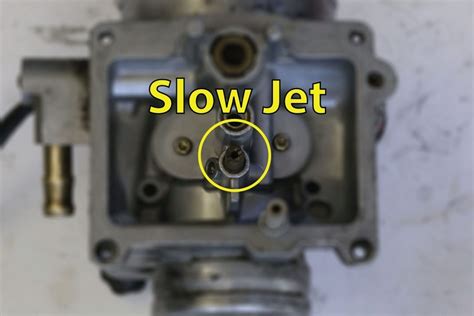Unlock Peak Performance: Dirt Bike Carb Tuning Secrets
Dirt bike engines are temperamental beasts. Getting the perfect power delivery requires more than just a good engine; it demands meticulous carburetor tuning. A properly tuned carburetor translates to a smoother throttle response, increased horsepower, improved fuel economy, and a more enjoyable riding experience. This guide delves into the secrets of dirt bike carb tuning, empowering you to unlock your bike's peak performance.
What is Carburetor Tuning?
Carburetor tuning is the process of adjusting the fuel-to-air mixture entering your dirt bike's engine. The goal is to achieve the optimal ratio for efficient combustion across the entire RPM range. This isn't a one-size-fits-all process; it depends on factors like altitude, temperature, engine modifications, and even the type of fuel you're using.
Understanding Your Carburetor's Components
Before diving into the tuning process, it's crucial to understand your carburetor's key components and their functions:
- Pilot Jet: Controls the fuel mixture at idle and low RPMs.
- Main Jet: Controls the fuel mixture at higher RPMs.
- Needle Jet: Fine-tunes the fuel mixture across the mid-range RPMs.
- Air Screw: Adjusts the air/fuel mixture at idle.
- Float Level: Determines the amount of fuel in the float bowl. An incorrect level can lead to lean or rich conditions.
Common Carb Tuning Issues and How to Address Them
Many riders experience performance issues stemming from improper carburetor tuning. Here are some common problems and their solutions:
1. My bike is running rich (too much fuel).
Symptoms: Black smoke from the exhaust, poor throttle response, fouling spark plugs, and decreased power.
Solutions: This often requires adjustments to the main jet (smaller jet for a leaner mixture), the needle jet (lowering the clip position on the needle), or the air screw (turning it clockwise to reduce fuel).
2. My bike is running lean (too little fuel).
Symptoms: Overheating, pinging or knocking (detonation), poor power, and a lean popping sound from the exhaust.
Solutions: You might need to increase the size of your main jet, raise the needle clip position, or turn the air screw counter-clockwise to enrich the mixture.
3. My bike is bogging down or hesitating.
Symptoms: The engine hesitates or stumbles under acceleration, particularly in the mid-range.
Solutions: This usually points to a problem with the needle jet or the overall air/fuel mixture in the mid-range. Adjusting the needle clip position is a good starting point. You might also consider adjusting the pilot jet if the bogging is noticeable at lower RPMs.
Tools and Equipment Needed for Carb Tuning
To tune your carburetor effectively, you'll need the following tools:
- Screwdrivers: Phillips and flathead, in various sizes.
- Jet Kit: A jet kit allows for easy changes to pilot and main jets.
- Vacuum Gauge: Helps determine accurate idle speed.
- Spark Plug Wrench: To check spark plug condition.
- Clean Work Area: This is vital for avoiding dirt contamination.
- Shop Towels: Cleanliness is paramount throughout the entire process.
Step-by-Step Carb Tuning Guide
While a detailed step-by-step guide is beyond the scope of this article (as carburetor specifics vary significantly between models), here's a general approach:
- Consult Your Owner's Manual: Understand the specifics of your carburetor and its adjustments.
- Clean the Carburetor: Thoroughly clean all parts before making any adjustments.
- Start with Small Adjustments: Make minor adjustments (1/8th of a turn) and test the bike after each change.
- Note the Changes: Keep a record of the adjustments made and their effect on the engine's performance.
- Professional Assistance: If you're unsure about any aspect of carburetor tuning, consult a professional mechanic.
Additional Factors Affecting Carb Tuning
Several environmental and mechanical factors influence your carburetor settings:
Altitude: Higher altitudes require richer mixtures due to lower air density.
Temperature: Colder temperatures necessitate richer mixtures.
Modifications: Engine modifications like air filters or exhaust systems require carburetor adjustments.
Fuel Type: The type of fuel used (e.g., pump gas vs. race fuel) can affect the ideal fuel-to-air ratio.
Conclusion
Mastering dirt bike carburetor tuning is a rewarding skill that significantly enhances your riding experience. By understanding the principles of fuel-to-air mixtures, properly using your tools, and making meticulous adjustments, you can unlock your bike's peak performance and enjoy smoother, more powerful rides. Remember to always prioritize safety and consult a professional if needed. Happy riding!

